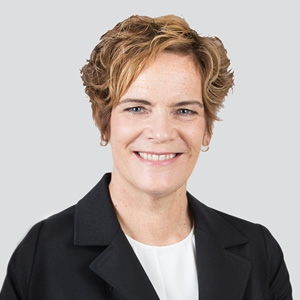The most recent issue of The Foundation Review (Volume 7, Issue 4) includes a special section of four articles on theory of philanthropy — which is a way for a foundation to create and share a comprehensive and integrated picture of how and why it operates as it does. One of the two case studies included in this section is about the work we did at the foundation I lead, the Palix Foundation.
Developing a theory of philanthropy for the Palix Foundation was a highly strategic and important learning process. It was an opportunity to delve into better articulating and understanding what we aim to achieve and the evolution of our strategy over time, with a particular focus on how we go about doing our work. While the foundation’s operations and investment strategy had been set up to support its ultimate aim to improve health and wellness outcomes through the Alberta Family Wellness Initiative (AFWI), engaging in the process to develop a theory of philanthropy made the way we’ve been going about this more understandable, explicit, easier to communicate, and potentially, replicable.
“Explicit knowledge gained through the theory-of-philanthropy exercise is a significant value-add to our work, but we did not know this until we engaged in this process of discovery.”
This is an important learning outcome both for those of us who work at the foundation and for the hundreds, if not thousands, of stakeholders collaborating with us to achieve impact through the AFWI. Explicit knowledge gained through the theory-of-philanthropy exercise is a significant value-add to our work, but we did not know this until we engaged in this process of discovery. What did we learn along the way?
- Think about timing. We decided to engage in the theory-of-philanthropy process while the interim developmental evaluation of the AFWI, conducted at its five-year mark, was underway. This turned out to be a highly effective way to integrate and analyze the learnings from the evaluation into the theory-of-philanthropy process (and vice versa), thereby enriching the depth, relevance, and outcomes of each exercise.
- Invest in the best expertise. We engaged world-class experts (i.e., the authors of the main paper) to design and carry out the theory-of-philanthropy process in collaboration with the foundation team and several dozen external stakeholders. The theory-of-philanthropy consultants were also advisors on the developmental evaluation process. Their deep familiarity with the organization and expertise in innovation, evaluation, and strategy made a significant difference to the quality of both the theory-of-philanthropy process and the framework that resulted from it.
- Communicate learnings to strengthen and build relationships. Together, the developmental evaluation and theory of philanthropy formed a powerful package of insights into the foundation’s theory of change and theory of philanthropy that were shared with staff, board members, advisors, partners, and many others to support all of our learning. The theory-of-philanthropy framework has proven to be a highly effective way to build understanding with potential partners and collaborators about the role the foundation plays in the philanthropic process. It makes explicit how we go about making a contribution as knowledge entrepreneurs, catalytic conveners, and partners with the community and public systems.
- Integrate theory-of-philanthropy findings into strategy and planning. The findings and framework ultimately enhance an understanding of our role and contribution as a foundation so we can continue to be as strategic as possible with our time, resources, and expertise. The beauty of a well-articulated theory of philanthropy is that it is not simply a theoretical exercise. Its practical contributions to philanthropic strategy are real and pragmatic, ranging from planning truly catalytic events to developing employees and consultants to become experts in facilitating the creation of knowledge entrepreneurs. Moreover, now that the Alberta Family Wellness Initiative theory of philanthropy is explicit, others can more readily duplicate it in their own contexts and settings — a fractal pattern with a cumulative positive impact on children and families over time: in other words, exactly what the AFWI is aiming to achieve.
I encourage every foundation to consider how articulating their own theory of philanthropy will contribute to being a more effective funder, partner, and changemaker. While the process may seem intimidating, the alignment it brings is well worth the effort.


